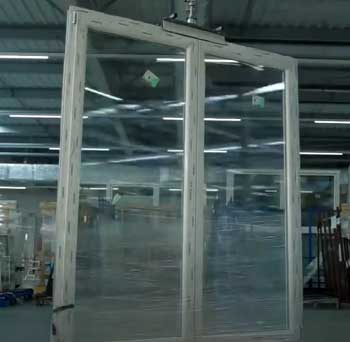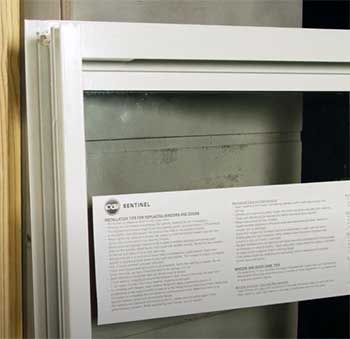When it comes to replacing or installing new windows in your home, two popular options are ECO windows and CGI (custom glass insulated) windows. Both offer energy-efficient performance, durability, and customization options.
But how do you decide which is the better choice for your home and lifestyle? In this comprehensive guide, we’ll compare the pros, cons, features, and costs of ECO and CGI windows to help you make the right decision.
A Brief Comparison Table
| Comparison Criteria | ECO Windows | CGI Windows |
| Frame Materials | PVC | Aluminum, wood, fiberglass, composites |
| Glass Options | Double or triple pane, laminated or tempered | Double, triple or quad pane, wide range of specialty glass |
| Energy Efficiency | Very good | Excellent |
| Noise Reduction | Excellent | Superior |
| Weather Resistance | Excellent, impact-resistant | Very good, stronger frames |
| Security Features | Highly impact-resistant | Very secure, laminated glass, window film |
| Durability | 30+ years | 40+ years |
| Visual Appearance | More limited style options | Unlimited customization |
| Installation | Direct replacement, minimal mods | Greater precision and mods needed |
Key Takeaways
- ECO windows excel at impact resistance and durability thanks to their heavy-duty PVC frames and laminated glass. They are ideal for hurricane-prone coastal areas.
- CGI windows are superior when it comes to thermal performance and noise reduction. Their multi-pane glass units with advanced framing offer the best insulation.
- CGI windows are fully customizable in shapes, materials, finishes, and glass options. ECO windows have more limited aesthetic choices.
- ECO windows are more affordable, easy to install, and offer an excellent balance of features for most homeowners. CGI windows are premium-priced.
- For energy savings and weather resistance, ECO windows are a great value. But CGI windows achieve the absolute highest efficiency ratings.
- Both window types substantially outperform standard windows in energy use, noise, security, and longevity. Upgrading delivers significant benefits.
- Carefully match the window features and performance to your climate, home style, budget and needs. Consult experts to make the right choice.
- For coastal region impact protection plus efficiency gains, ECO is likely the top choice. CGI excels where custom looks and maximum insulation matter most.
What Are ECO Windows?
ECO windows, also sometimes called impact-resistant windows or hurricane windows, are designed to withstand extreme weather conditions. They are made of a durable polymer called polyvinyl chloride (PVC), which makes them resistant to rot, rust, and corrosion.
Here are some key features and benefits of ECO windows:

- Impact Resistance: ECO windows are designed to withstand impacts from flying debris during hurricanes and tropical storms. They meet the strict windspeed requirements for high velocity hurricane zones in coastal areas.
- Energy Efficiency: ECO windows come standard with double or triple glazing to reduce heat loss in winter and heat gain in summer. Their frames have thermal breaks and low-E coatings to boost efficiency.
- Noise Reduction: The heavy-duty PVC frames and multi-pane glass of ECO windows block outside noise better than standard windows.
- Security: Forced entry is much harder with an ECO window’s durable frame and impact-resistant glass.
- Low Maintenance: The PVC frames won’t rot or warp and never need repainting. The sealed glass units reduce cleaning needs.
- Customization: ECO windows come in a wide range of styles, colors, and configurations to match your home’s aesthetic.
What Are CGI Windows?
CGI stands for custom glass insulated. These are custom-made windows designed for optimal energy efficiency, durability, and noise reduction.
Here are some of the defining features and benefits of CGI windows:
- Superior Insulation: CGI windows have an airtight seal and can accommodate triple- or quad-pane insulated glass units for excellent thermal performance. Some even use inert gas fills like argon or krypton between the panes.
- Noise Reduction: Thick insulated glass, tight sealing, and other enhancements allow CGI windows to achieve very high STC (sound transmission class) ratings for blocking noise.
- Strength: CGI windows often use metals like aluminum for the frame and sash. This provides strength and durability to withstand extreme weather conditions.
- Custom Options: From unique shapes to divided lite patterns and mixed frame materials, CGI offers nearly endless customization possibilities.
- Energy Star Compliant: Many CGI windows meet strict Energy Star requirements for U-factor and Solar Heat Gain Coefficient (SHGC).
- Enhanced Security Features: Features like laminated or tempered glass, reinforced frames, and multi-point locks make CGI windows highly secure.
ECO And CGI Windows Comparison
Now that we’ve covered the basics of ECO and CGI windows, let’s compare them across some key factors:
Frame Materials

- ECO: Polyvinyl chloride (PVC). Resists rotting, warping, swelling, and corrosion.
- CGI: Typically aluminum or wood. Fiberglass, vinyl, and composites are options. Metals resist warping.
Glass Options
- ECO: Double or triple pane. Laminated for impact resistance. Standard or tempered glass.
- CGI: Double, triple, or quad pane. Tempered, laminated, spandrel, acoustic, low-E and more.
Energy Efficiency
- ECO: Very good. Double or triple panes with low-E coatings, argon gas, improved framing, and weatherstripping.
- CGI: Excellent. More panes and low-E options. Thermal breaks in frames. Inert gas fills. Higher insulation.
Noise Reduction
- ECO: Excellent. Multi-pane construction, tight sealing, laminated glass, and improved framing create sound barriers.
- CGI: Superior. Thicker glass, advanced framing, tight tolerances, and other enhancements reduce sound transmission.
Weather Resistance
- ECO: Excellent. Impact-resistant construction tested for coastal high-velocity wind zones.
- CGI: Very good. Stronger frames and structural enhancements increase wind load resistance.
Security Features
- ECO: Highly impact-resistant materials. Laminated or tempered glass options. Window film can be added.
- CGI: Very secure. Stronger frames, multi-point locks, laminated glass, and window film provide protection.
Durability & Longevity
- ECO: 30+ years. PVC resists rot, rust, swelling, warping. Never needs painting.
- CGI: 40+ years. Stronger metal and composite frames outlast other materials.
Cost
- ECO: $$-$$$. Mid-range pricing, with higher impact-resistant models costing more.
- CGI: $$$-$$$$. Wide range based on materials, customization, and performance options selected.
Visual Appearance
- ECO: More limited style options. Mostly offered in white or neutral exterior colors.
- CGI: Nearly unlimited aesthetic options for shapes, trims, colors, glass, and divided lites.
Installation Requirements
- ECO: Can directly replace most existing windows. Minimal modifications needed.
- CGI: Often requires more modifications to walls, interior and exterior finishes. Greater installation precision needed.
ECO Windows: Pros and Cons
Pros:
- Excellent impact, weather, and forced entry resistance
- Noise reduction capabilities
- Very energy efficient and airtight
- Durable, low-maintenance PVC frames
- Cost effective given performance level
- Easy installation with minimal home modifications
Cons:
- More limited on design, divided lite, and color options
- Lower visible light transmittance due to impact glass
- Not as thermally efficient as high-end CGI windows
- Larger sizes may require additional structural reinforcements
CGI Windows: Pros and Cons
Pros:

- Superior energy efficiency and insulation
- Excellent durability from metal and composite frames
- Very high noise reduction capabilities
- Maximum customization for aesthetics and performance
- Available smart home features like electronic locks and sensors
- Prestige of customized high-end windows
Cons:
- Much higher cost than standard or ECO windows
- Metallic frames conduct more heat and cold
- Installation often requires more modifications to home
- Impact resistance lower than reinforced ECO windows
- Larger sizes require additional structural support
Frequently Asked Questions (FAQ)
Yes, eco impact windows offer many benefits. Their durable polymer frames and laminated impact-resistant glass allow them to withstand extreme weather and resist forced entry. ECO windows also provide excellent noise reduction, energy efficiency, and low maintenance demands.
For coastal regions prone to tropical storms and hurricanes, laminated impact-resistant glass windows like ECO are best. Their heavy-duty PVC frames and multi-pane glass withstand strong winds, wind-borne debris, and storm impacts. They meet the strictest codes for high velocity hurricane zones.
PGT is a leading manufacturer of impact-resistant vinyl windows. Their ECO line competes directly with CGI windows. Overall, CGI offers greater customization and top-tier energy performance. But PGT ECO windows provide superior impact resistance and weather endurance at a more affordable price point for many homeowners.
ECO windows are constructed using durable, weather-resistant polyvinyl chloride (PVC) framing. Their impact glass is laminated layers of standard glass with a strong interlayer bonding them together. This prevents shattering and maintains integrity when impacted. ECO windows have double or triple insulated glass units filled with argon or air. Advanced weatherstripping is used for an airtight seal.
Final Thoughts
In summary, ECO and CGI windows both offer upgrades over standard windows, but excel in different areas.
For coastal homes needing proven impact resistance along with energy savings and noise reduction, ECO windows are an excellent choice. Their durable construction withstands high winds, storms, and projectile impacts better than CGI windows.
And their competitive pricing makes ECO windows very cost effective.
Where ultimate energy performance, noise reduction, and endless customization are top priorities, CGI windows may be preferred, if budget allows. Frame materials like aluminum and composites outperform vinyl structurally.
And CGI’s layered quad-pane glass, gas fills, and advanced framing result in windows that are highly insulating. No other window matches CGI for beauty, personalization, and a luxurious feel.
Carefully balancing your needs for weather protection, energy use, noise, security, aesthetics, and budget will dictate whether ECO or CGI is the right solution for your home.
If you still have questions, consult with window specialists to get professional recommendations based on your specific climate, home construction, and goals. Investing in high-performance window replacement or new installs will reward you for decades to come.

